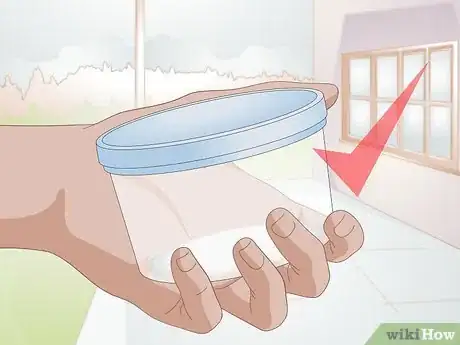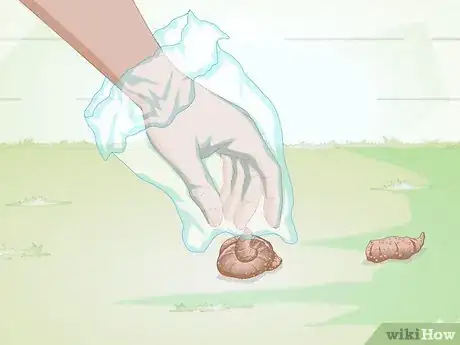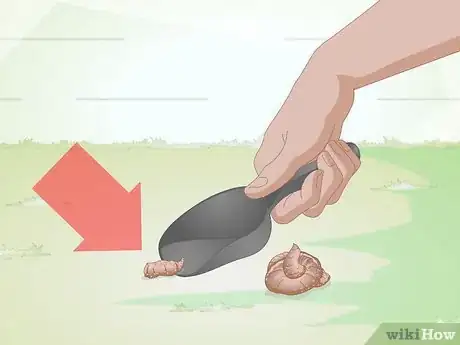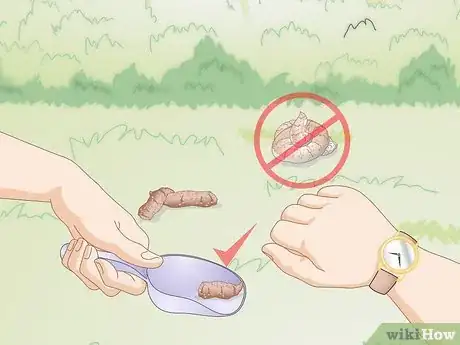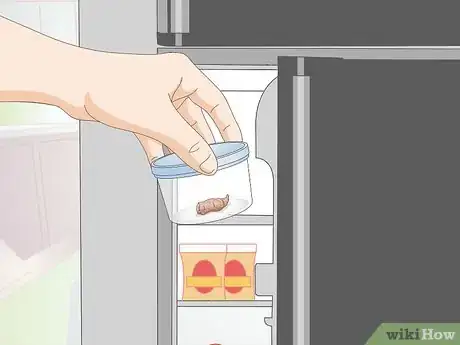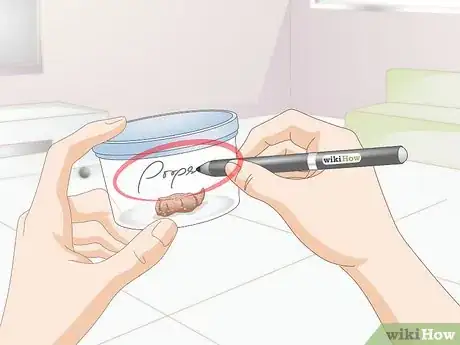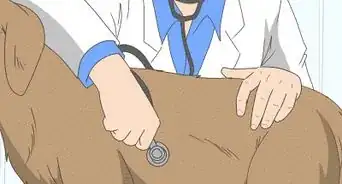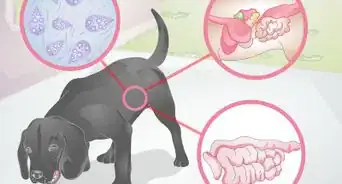This article was co-authored by Pippa Elliott, MRCVS. Dr. Elliott, BVMS, MRCVS is a veterinarian with over 30 years of experience in veterinary surgery and companion animal practice. She graduated from the University of Glasgow in 1987 with a degree in veterinary medicine and surgery. She has worked at the same animal clinic in her hometown for over 20 years.
This article has been viewed 49,023 times.
When you bring your dog in for its annual veterinary exam you will likely be asked to bring in a fecal sample as well. This can be used for a variety of testing but is most often used to check for intestinal parasites, such as roundworms and giardia.[1] Collect the feces in an air-tight container while avoiding any physical contact with the actual feces. In order for the tests to be very accurate, it's important to bring in a moderately-sized fresh sample that your dog eliminated that day.
Steps
Collecting the Fecal Sample
-
1Get a container ready. Many people use zip-lock bags to collect fecal samples in. Some people use plastic lidded containers that they don't plan on using again. Whatever container you use, make sure the container is leak proof.
- If you are worried about finding a good container, you can always get one at your veterinary office. Drop by before your appointment and ask for a fecal container to use when collecting your sample. Most veterinary offices will always have some on hand.[2]
-
2Collect the sample without touching it. You should either use a disposable utensil or pick the feces up with the container you plan on holding it in. For example, if you use a plastic bag, such as a poop bag, turn it inside out and stick your hand inside of it to use it like a glove. This will allow you to grab the feces and then turn the bag right side out without any skin contact with the feces.
- This process will end up with the poop in the bag and your hand clean.
- Try to avoid including debris from the area in your sample. Avoid getting a lot of grass or rocks in the sample container but a few pieces will not damage the sample.
Advertisement -
3Collect a small sample. You do not usually need a huge stool sample to bring to the vet. A small sample will be easier for you to deal with and it will provide plenty of feces for the veterinarian to test.[3]
- Any tests done on the stool will use a minimal amount. With this in mind, usually about a gram of stool is enough.
-
4Make sure the sample is from your dog. If your dog goes to the bathroom in an area where other dogs also go to the bathroom then you need to make sure that you are getting the correct sample. Watch as your dog relieves itself and grab its specific feces.
- This does not mean that you need to chase your dog around your yard and collect its feces before it hits the ground. It just means that you need to be sure that you can identify its specific feces by seeing where your dog goes to the bathroom.
Handling the Fecal Sample
-
1Get a fresh sample. Your vet will need a stool sample that is soft and pliable in order to test for parasites. Don't take the sample too far in advance and don't pick up stool that is old and dried out.[4]
- Wait until a time close to your appointment to collect the sample, but be sure not to wait so long that your dog doesn't have a bowel movement when you need it to.
-
2Store the sample in a fridge before the appointment. If you can't get a really fresh sample, for instance your dog only poops in the morning and you have an appointment in the afternoon, then store the sample in the fridge.[5] This will help to keep the stool fresh enough so that any tests that are run on it will be accurate.
- Make sure that the sample you bring in was collected within 12 hours of the appointment.
- Be sure to place the sample in the container inside of another container, such as a plastic bag, and keep it well away from the food in your fridge. You may also want to put a note on it to warn any other household members about what is in the container.
- Only place the sample in the fridge as a last resort in hot weather if you have nowhere else to keep it cool.
-
3Write your dog's name on the sample container. While you probably only have one fecal sample to deal with, and thus won't get it mixed up with other ones in your fridge, there are likely quite a few in your veterinary office. To avoid any possible confusion at the veterinary office, label your sample with your dog's name.[6]
References
- ↑ http://www.pethealthnetwork.com/dog-health/dog-checkups-preventive-care/why-does-my-veterinarian-want-a-poop-sample
- ↑ http://www.mypawsitivelypets.com/2014/05/bringing-fecal-sample-to-your.html
- ↑ http://www.mypawsitivelypets.com/2014/05/bringing-fecal-sample-to-your.html
- ↑ http://www.mypawsitivelypets.com/2014/05/bringing-fecal-sample-to-your.html
- ↑ http://www.pethealthnetwork.com/dog-health/dog-checkups-preventive-care/why-does-my-veterinarian-want-a-poop-sample
- ↑ http://www.mypawsitivelypets.com/2014/05/bringing-fecal-sample-to-your.html
About This Article
To get a fecal sample from your dog, start by putting your hand into an inside out plastic bag and picking up the feces. Then, turn the bag right side out and seal it. Alternatively, use a scoop to pick up the feces and place it in a lidded plastic container. Next, label the bag or container with your pet’s name and store it in the fridge until you can get it to your vet. However, make sure to get the sample to the vet within 12 hours, because it needs to be fresh for the testing to be accurate. For advice from our Veterinary co-author on how much feces you should gather for a sample, read on!
